Marketing Strategy Assignment: Examination of Segmentation, Targeting & Positioning
Question
Task: This marketing strategy assignment has been designed to allow students the opportunity to explore the underlying importance and application of marketing strategy and implementation concepts to produce recommendations for selected organizations.
“…positioning and segmentation are distinct parts of the strategy process and provide us with some extremely powerful tools; but ultimately they are linked by the central issue of focusing on satisfying customer’s needs in ways that are superior to competitors” (Hooley et al, 2017 p159)*.
*Hooley et al (2017) Marketing Strategy & Competitive Positioning. 6th ed. Harlow Pearson.
By reference to academic literature evaluate, and critique, the concepts of Segmentation, Targeting & Positioning (STP) including a consideration of implementation issues.
With supporting evidence, use appropriate examples from different industries (plural) to exemplify how different organizations (plural) have applied STP, to demonstrate your learning and application of this topic.
Indicate how any company could apply the concepts around STP, making generic recommendations for best practice.
You are required to produce a report that should have:
- a sound theoretical and conceptual perspective, containing evidence of critical debate with reference to appropriate academic literature (at least 10 academic journal articles)
- sound examination of STP and its application in industry, with evidence, showing effective practical understanding
- generic management recommendations
Answer
Introduction
The present marketing strategy assignment examines the concept of STP in marketing which is an acronym for segmentation, target, and positioning-a model, which reviews certain services and products and the way companies communicate their effectiveness to consumer segments. This study will examine segmentation, targeting and positioning theory and concept individually with putting examples from different industries and companies. This study will also develop generic management recommendations for better application of STP.
Evaluate and critique the concept of Segmentation and marketing strategies
Market segmentation is underlined as a way of dividing a market in homogeneous and small divisions of consumers with separate requirements or characteristics that demand the identification of one or more segments (Melancon and Dalakas, 2018). These segments respond dissimilarly to the elements of the marketing mix model. The segmentation of market is generally done by bases like demography, socio-cultural, geography and psychographics variables.
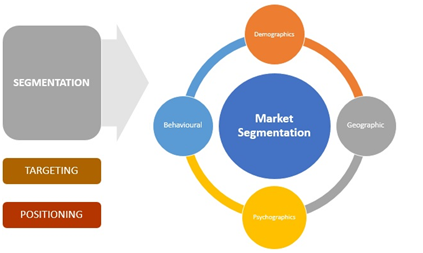
Figure 1: Basic types of marketing segmentation
(Source: Carnein and Trautmann, 2019)
The critique over the process of market segments (that is whether they are artificial or practical) has important applications for marketing policy and consumer policy. If market segments are artificial, as neo-classical financial theory manages, then companies in the same sector must all manufacture similar market providing and services as demands homogeneity needs supply equality (Dolnicar et al., 2018). If companies made market services, which satisfy standardized sector demands; then the market services made would be basically unchanging, and any perceived dissimilarities among them will be effectively invented creations of companies or be the outcome of either customer ignorance or unreasonable customer preferences (Camilleri, 2018).
Marketing strategies collect consumer information, underlines segments, and makes promotions targeted at those consumer segments. Automating segment process cuts lead time for promotions from weeks to hours, exploiting on immediate trends and developing upcoming customer requirements (Lombart et al., 2018).
A main criticism of the segmentation process is that this does not capable firms to adjust in changing situations of customer demands. Making a dynamic segmentation process using intelligent Cloud technologies could power the formation of market segments. Rather than stating the segmentation process outmoded, augmenting segmentation with online innovations offers firms more scope (Verain et al., 2016).
Evaluate and critique the concept of Targeting and marketing strategies
Targeting is a consumer-oriented rather than product-oriented model for marketing strategies that aid in delivering relevant contents to commercially interesting consumers (Zhang et al., 2020). The targeting decisions underscores the customers and firms in a service-market to that a company directs the positioning policy. Identifying effective market targets is considered as management’s most critical challenges (Waltersand Bekker, 2017). For instance, must the firm attempt to assist all the consumers who are keen and capable to purchase a service or product or, as an alternative, selectively concentrate on singular or more sub-groups?
Examination of any product-market, its consumers, the company’s skills and materials, and the process of competition are important for ensuring the decisions. Micro segment is currently becoming famous; assisted through efficient segmentation as well as targeting processes like information base promotion and mass customization (Nadube and Didia, 2018). Developing, growth, maturity, decreasing and international market conditions are underline to state targeting situations.
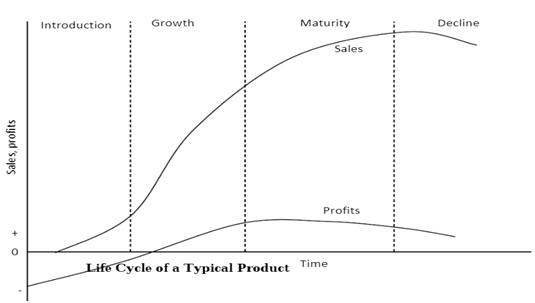
Figure 2: Different targeting situations
(Source: Nadube and Didia, 2018)
The model offers a conceptual framework for acknowledging the impact of marketing policies on non-targeted and targeted consumers.
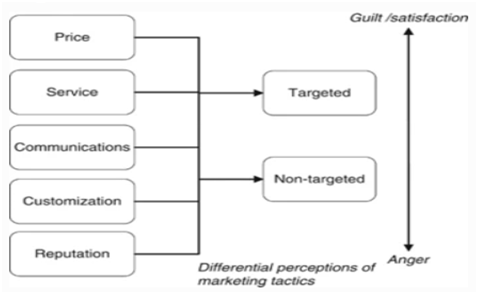
Figure 3: Influence of marketing on targeted and non-targeted consumers
(Source: Nadube and Didia, 2018)
Targeting a few wider market segments might happen when there is a chance for consumers requirement differentiation as well as the company entering wants to develop a main position in the market through targeting a few wider segments (AL-hazmi, 2020).
Evaluate and critique the concept of Positioningand marketing strategies
The positioning mapping is last part of the STP model. For successful positioning two variables required to inputted in the market overview (Tsai et al., 2017). For instance, cars exist in the United Kingdom market could be included here. If there were no cars in one segment market; this can suggest a market opportunity for firms.
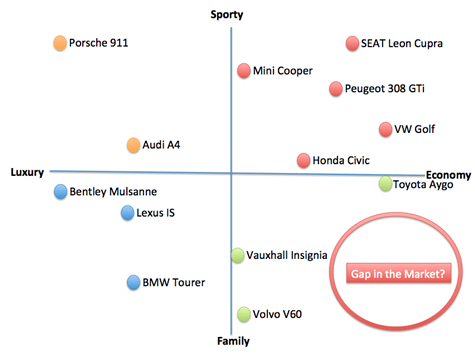
Figure 4: Positioning map for Car models
(Source: Tsai et al., 2017)
Developing on the very fundamental instance above, firm could unpack the market through identifying competitors into a framework based on core facts, which underline buying (Fayvishenko, 2018).
Market position is determining the needed insight or association of a company through consumers of the target market segment as well as increasing the promotional policy with a concept to reach (or surpass) the requirements of the consumers of this market (Cheng and Liu, 2017). The aim of positioning is to address the products in the customers’ interests so that company could ensure developed significant benefits. Marketers formulate dissimilar importance propositions for positioning varied brands for diverse market segments. For instance, Chevrolet positioned its Cobalt automobile along the sporty styling, minimum rear seat, and smaller trunk to new customers; this positions its Impala, a much big car, at the family care consumers requiring a roomier car (Chowdhury, 2013). The systematic positioning must resonate to consumers, separate the company from its competitions, reproduce and aided through the culture, policy, and skills of the firm.
Critically appraise how Segmenation, Targeting and Positioning has been applied to develop solutions to strategic implementation issues
Segmentation policy examples
It has been found out that one of the effective examples of brands, which applied market segmentation to maximizing their business effects are from manufacturing industry of beauty, hair care and other products. For instance, the razors by Gillette marketed to men and women (Gillette Venus) are basically the same, however, this company has applied differentiation in packaging and promotional messages for their market segments (Sciglimpaglia and Raafat,2020). On the other hand, based on consumer experience survey data for developing insights on consumer loyalty; Web Hosting Canada included in the Web Hosting industry had developed a customer experience survey for reviewing what every of the consumers expected and need from the brand and how effectively customers perceive the operations of the company in meeting expectations on individual level (Wu et al., 2019). Thus, the segmentation strategy has been based on group, which loved the services and was loyal to the company, groups, which responded that the services and brand are no effective or bad than the competitors, however, they have continued to avail the services. The last group was not even sure about the reasons of continuing their patronages with the brand.
Compared to the above two different examples, Crowdy in the Customer Service operations and marketing platform had applied the segmentation policy for their consumers market in which features they have used mostly in the digital application (capterra.com, 2021). The company have many varied services when this comes to social proofing tools as well as generally, consumers did not end up applying all of them. Crowdy has sent email newsletters to the consumer base, however, this is no help sending an email regrading a characteristic, which the consumer did not applied. Applying this type of segmentation policy, the company has been capable of developing the click-by ratings from emails by around 40%.
Targeting policy application examples
Nike included in the global foot ware, sportswear and other industry analysed its target market built on size, quantifiability, communication and behavioural variables. Specifically, the company has targeted expert players and sporty people offering them customized and innovative items (Jiang et al., 2019). Besides, all services are accessible, even online, with the innovative chance Nike’s customers to make their own customized designs for shoes that made the company more recognisable in separating to other competitors in the same market. This must be remembered that Nike also targeted the market by psychological segmentation through sponsoring famous athletes with professional achievements. This strategy closely connects Nike’s products with success.
On the other hand, Netflix’s targeting policy for modern marketing included emails for introducing new customers for the streaming platform. After that, the brand segmented customers in groups as well as provided personalized service suggestions and associative updates relied on their preferences (Davis and Zboralska, 2017). The main targeting policy is focused on youth segment of customers. This is majorly the millennials who are its core target market. Though, despite individual customers, Netflix has also targeted middle- and higher-income families. The brand is one of the players in the industry, which achieved this during they increase their innovative proposition: Netflix provided customers to view as much as videos and movies as they want in the comfort of their homes.
Lego Group a toy production firm; applied the targeting policy majorly for kids from one to fifteen years old. Although, their target marketing policy has changed and the brand has developed a wider base of users as well as followers among the adults. On the other side, Lego has created a diverse range of games for engaging the kids and adults. This type of market targeting policy that includes digitalization and concentrated on knowing their consumer base is effective for ensuring good brand position and developing market reach (Wells, 2017).
Positioning strategy application examples
Coca-Cola, in the beverage manufacturing industry marketed a significant change in their positioning policy with latest “Taste the Feeling” international marketing campaign launched in 2016. This type of positioning strategy replaces the firm’s “Open Happiness” campaign that previously communicated the message of searching fun as well as refreshment in trivial moments of life (ABBASI, 2017). The company has included the expert branding policy to develop its main brand Coca Cola as well as a part of this brought together all other sub-brands. This new planning has been effective to the firm market positioning however, outlined different problems such as the requirement for designing an innovative communication policy and product packaging.
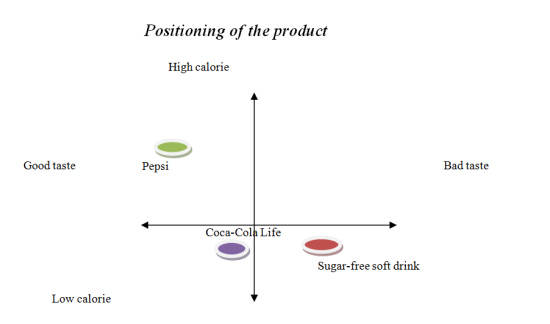
Figure 5: Coca Cola positioning graph
(Source: Deshpande et al., 2020)
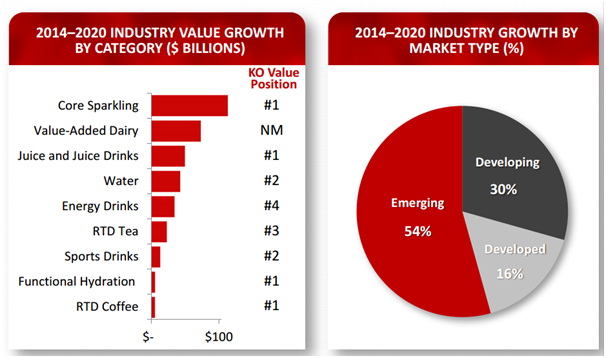
Figure 6: Coca Cola industry value and positioning
(Source: Deshpande et al., 2020)
It can be said that Coca-Cola applied various combinations to target varied age groups, sexes, lifestyles, ethnic groups, and others in their positioning landscape. For instance, they have marketed “OASIS” a soft beverage for targeting the age group of customers who are between 20 to 30 (ABBASI, 2017). Additionally, the company has produced products such as “Diet Coke, Coca Cola Zero” for the health-conscious customers who did not preferred calories however, could not forgot the taste. The target market of customers in this group included people aged around 30 to 50. Coca-Cola has utilized important situating strategy with a particular end aim to have the common picture all around the world that is an effective market positioning move since this is seen currently as a part of daily life of the target customers (ABBASI, 2017). This type of market impression of the company through customers promoted a higher level of reliability as well as settled on the acquiring selection more programmed.
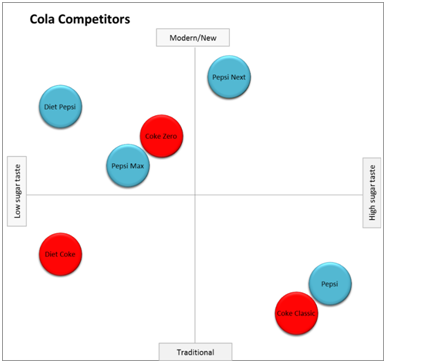
Figure 7: Perceptual mapping of the competitors in the market
(Source: Deshpande et al., 2020)
Facebook applied multi-segment kind of positioning policy and as per the firm targeted multiple consumer segments at the same time with diverse social media platforms (Bahcecik et al., 2019). For instance, company’s social media site targeted people keen in an entire level of social media services like pages, events, news, and others; while Instagram aimed consumer segment that are interested in exclusive photo sharing operations. The positioning strategy of Facebook also included adaptive policy around its brands, reposition of services as per the changes in preferences of target consumer base.
Generic Management Recommendations
Some of the recommendations for successful STP are listed below;
- Company managements must not neglect USP of their brans and must not ensure any confusion to the target consumers and multiple positioning concepts might confuse customers and might weaken success level of positioning actions (Kalam, 2020).
- Brand managers must initiate head-to-head competition against any product leaders. Concentrating on niche markets or identifying a position in which effective competitors have limitations is accountable (Kamthania et al., 2018).
- Positioning must not a process of adopting in changing environment as well as managers must be aggressive to use the opportunities through taking flexible policies that are proper for any organization (Kalam, 2020).
- Before launching customer survey, concentration on database and underlining demographic, income, and other information relevant for categorizing customers should be done. Running the typing technique on marketing databases for classifying customers in needs-oriented segments is necessary (Nguyen et al., 2012).
- Cross-platform polices could help ineffective outcomes as targeting through definition should be individualistic, not platform or product-based. Starting with the separate targets in the market, involving demographics, digital characteristics, buying history, repeat purchasing style and loyalty of customers should be measured (Kamthania et al., 2018).
Conclusion
From the above discussion regarding segmentation, positioning and targeting model; effective strategies and marketing context application has been developed. The above discussion also helpful in bringing several examples of STP application in the marketing and brand development context. This report is also useful in developing recommendations on increasing STP decision-making and implementation on management perspective.
References
ABBASI, H., 2017. Marketing Strategies Of Coke: An Overview. Kaav International Journal of Economics, Commerce & Business Management, 4, pp.194-199. 10.25236/icemeet.2019.291
AL-hazmi, N., 2020. The impact of market targeting strategies on tourism services.
Management Science Letters, 10(12), pp.2799-2804.10.5267/j.msl.2020.4.030
Bahcecik, Y.S., Akay, S.S. and Akdemir, A., 2019. A Review of Digital Brand Positioning Strategies of Internet Entrepreneurship in the Context of Virtual Organizations: Facebook, Instagram and Youtube Samples. Procedia Computer Science, 158, pp.513-522.https://doi.org/10.1016/j.procs.2019.09.083
Camilleri, M.A., 2018. Market segmentation, targeting and positioning. In Travel marketing, tourism economics and the airline product (pp. 69-83). Springer, Cham.https://doi.org/10.1007/978-3-319-49849-2_4
Capterra.com. 2021. crowdy.ai Reviews and Pricing - 2021. [online] Available at:
Carnein, M. and Trautmann, H., 2019, April. Customer segmentation based on transactional data using stream clustering. In Pacific-Asia conference on knowledge discovery and data mining (pp. 280-292). Springer, Cham. vol 11439.
https://doi.org/10.1007/978-3-030-16148-4_22
Cheng, J.H. and Liu, S.F., 2017. A study of innovative product marketing strategies for technological SMEs. Journal of Interdisciplinary Mathematics, 20(1), pp.319-337.https://doi.org/10.1080/09720502.2016.1258837
Chowdhury, P.P., 2013. Key strategies and issues of positioning: A review of past studies. American academic & scholarly research journal, 5(1), p.55.www.aasrc.org/aasrj
Davis, C. and Zboralska, E., 2017. Transnational over-the-top media distribution as a business and policy disruptor: The case of Netflix in Canada. The Journal of Media Innovations, 4(1), pp.4-25.https://doi.org/10.5617/jmi.v4i1.2423
Deshpande, A., Kee, D.M.H., Shankar, D., Segi, S., Charles, E.A., Parameswaran, K. and Vellmurugan, M., 2020. Influence of Strategic Branding in Soft Drink Market in Indian and Malaysian Context: Study on Coca Cola to remain Top of the Mind Brand (TOMB). Asia Pacific Journal of Management and Education, 3(1), pp.82-93.https://doi.org/10.32535/apjme.v3i1.746
Dolnicar, S., Grün, B. and Leisch, F., 2018. Market segmentation analysis: Understanding it, doing it, and making it useful (p. 324). Springer Nature.
Fayvishenko, D., 2018. Formation of brand positioning strategy. Baltic Journal of Economic Studies, 4(2), pp.245-248. https://doi.org/10.30525/2256-0742/2018-4-2-245-248
Jiang, Z., Dan, W. and Jie, L., 2019. Distinct role of targeting precision of Internet-based targeted advertising in duopolistic e-business firms’ heterogeneous consumers market. Electronic Commerce Research, pp.1-22.https://doi.org/10.1007/s10660-019-09388-x
Kalam, K.K., 2020. Market Segmentation, Targeting and Positioning Strategy Adaptation for the Global Business of Vodafone Telecommunication Company. International Journal of Research and Innovation in Social Science (IJRISS), 4. Volume IV, Issue VI, ISSN 2454-6186, PP.427-430. https://www.rsisinternational.org/ Kamthania, D., Pawa, A. and Madhavan, S.S., 2018. Market segmentation analysis and visualization using K-mode clustering algorithm for e-commerce business. Journal of computing and information technology, 26(1), pp.57-68.https://doi.org/10.20532/cit.2018.1003863
Lombart, C., Labbé-Pinlon, B., Filser, M., Anteblian, B. and Louis, D., 2018. Regional product assortment and merchandising in grocery stores: Strategies and target customer segments. Journal of Retailing and Consumer Services, 42, pp.117-132.https://doi.org/10.1016/j.jretconser.2018.02.002
Melancon, J.P. and Dalakas, V., 2018. Consumer social voice in the age of social media: Segmentation profiles and relationship marketing strategies. Business Horizons, 61(1), pp.157-167.https://doi.org/10.1016/j.bushor.2017.09.015 Nadube, P.M. and Didia, J.U.D., 2018. Market targeting and strategic positioning.
International Journal of Marketing Research and Management, 8(1), pp.32-45.
Nguyen, B., Li, M. and Chen, C.H.S., 2012. The targeted and non-targeted framework: differential impact of marketing tactics on customer perceptions. Journal of Targeting, Measurement and Analysis for Marketing, 20(2), pp.96-108.https://doi.org/10.1057/jt.2012.7
Sciglimpaglia, D. and Raafat, F., 2020. Freemium marketing: use of demand-side research in market segmentation strategy. Journal of Strategic Marketing, pp.1-24.https://doi.org/10.1080/0965254X.2020.1824013
Tsai, Y.T., Wang, S.C., Yan, K.Q. and Chang, C.M., 2017. Precise positioning of marketing and behavior intentions of location-based mobile commerce in the internet of things. Symmetry, 9(8), p.139.https://doi.org/10.3390/sym9080139
Verain, M.C., Sijtsema, S.J. and Antonides, G., 2016. Consumer segmentation based on food-category attribute importance: The relation with healthiness and sustainability perceptions. Food Quality and Preference, 48, pp.99-106.https://doi.org/10.1016/j.foodqual.2015.08.012
Walters, M. and Bekker, J., 2017. Customer super-profiling demonstrator to enable efficient targeting in marketing campaigns. South African Journal of Industrial Engineering, 28(3), pp.113-127. http://dx.doi.org/10.7166/28-3-1846
Wells, B., 2017. Generating New Value with Consumers: A Multipie-case Study of Co-creation in The LEGO Group and Starbucks Corporation. Projet, 2017, p.2549.
Wu, C., Buyya, R. and Ramamohanarao, K., 2019. Value-based cloud price modeling for segmented business to business market. Future Generation Computer Systems, 101, pp.502-523.https://doi.org/10.1016/j.future.2019.06.013
Zhang, Q., Chen, J. and Zaccour, G., 2020. Market targeting and information sharing with social influences in a luxury supply chain. Transportation Research Part E: Logistics and Transportation Review, 133, p.101822.https://doi.org/10.1016/j.tre.2019.101822












